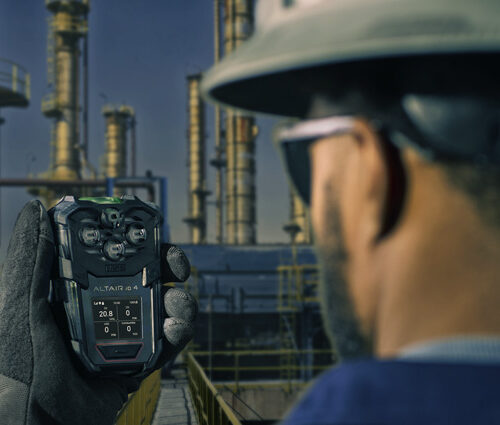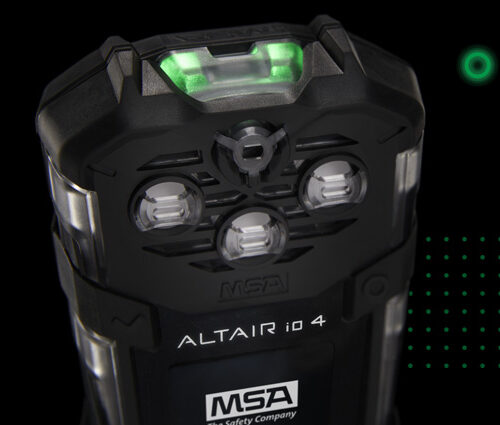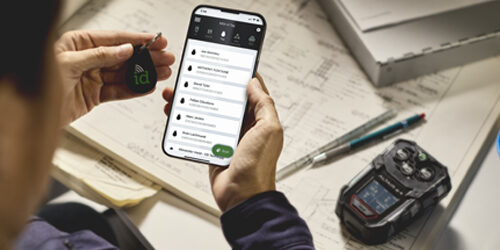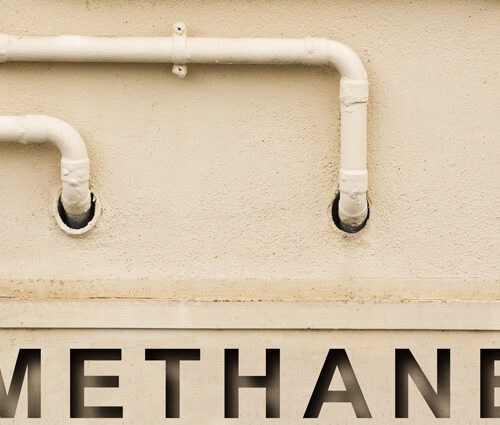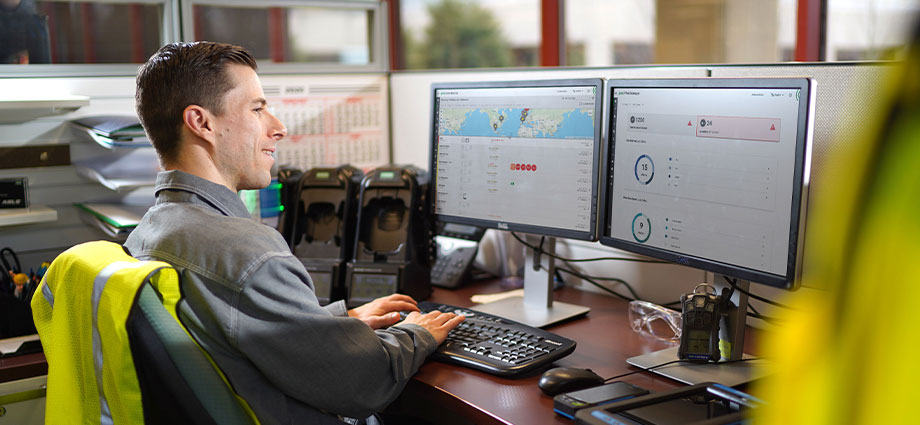
Not all gas detection programs are created equally. Nor, for that matter, are they all priced equally. Yes, price matters when creating or upgrading a gas detection program.
But price by itself is not the only subject to be considered, whether for gas detectors or for software-as-a-service (SaaS) connectivity solutions. What matters is total cost-of-ownership (TCO), which is price plus soft costs.
Some examples of soft costs include time spent by the safety manager to prepare reports and the hours in lost productivity for calibrating the portable gas detectors for the workday.
Chances are that some organizations have not considered some or all of soft costs that are inherent in gas detection. Though these soft costs may be overlooked or hidden, they still add up over the lifetime of the program.
Does a low price guarantee savings?
A lower price on a gas detector or other component of a gas detection program does not automatically mean savings.
Here’s an example of what we mean:
Assume that the safety manager is purchasing two gas detectors. The first detector is half the price as the second. Does this mean that the first detector will save the program 50%? No, it does not.
Here’s why:
The purchase price is not the same as the total cost evaluated over the lifetime of the device. In general, the more durable the device, the lower the total cost of ownership. That means that the so-called “more expensive” device will not need to be repaired or replaced as soon or as often as the “bargain” device.
When it comes to the software as a service, choosing a practical, intuitive software that brings easy-to-see insights, will help safety teams to save precious time in software training and in gas detector management in general. One person can take one single minute to identify the information needed on the software or have to take a full training session to understand how it works.
In the short-run, upfront costs may be slightly higher, whereas they actually save the safety program money in the long-run.
Price vs. TCO
Safety managers who are concerned about cost containment will want to understand that there is a difference between price and total cost of ownership. The terms “price” and “cost” mean the same thing and often are used interchangeably. TCO however, is not the same as price/cost.
Price/cost refers to the initial expenses incurred at the time of purchase. There is a price or cost for buying new devices or investing in a connected solutions (SaaS) subscription.
TCO, on the other hand, refers to purchase price plus all the cumulative expenses needed to operate, support, and maintain the products, solutions, and components of the gas detection program throughout their useful life. Of course, safety teams’ time are also included.
It’s easy for safety managers to overlook or not even think about these hidden expenses. However, knowing these non-purchase-price expenses are – and, more importantly, how they add up – is key to maximizing the investment into a gas detection solution.
Calculating Gas Detection TOC: What to Know
In addition to considering price, here are 5 hidden costs that safety managers might want to consider when determining total cost of ownership of the gas detection program.
1. Bump Testing and Calibration Gas
When it comes to keeping gas detectors in proper working order, daily bump testing and regular calibration is recommended. However, performing these tests manually is not only prone to human error, it costs the program both in terms of time and calibration gas.
Using an automated system like the MSA GALAXY® GX2 Automated Test System is an accurate and user-friendly way to test and maintain gas detectors. Because the GX2 can test up to 10 devices simultaneously, it’s faster than manual testing or other test stands. More devices means more time and labor costs saved during testing.
Also, because it has a highly efficient flow rate, the GX2 optimizes the deployment of calibration gas. With the GX2 automated test system, gas does not flow during the entire test; rather, it only flows when the sensors are undergoing span calibration. As a result, automated testing does not require nearly the amount of expensive calibration gas as manual testing does. In fact, manual testing can use twice as much calibration gas as automated testing with the GX2.
2. Maintenance
When calculating TCO, one of the most expensive and under-rated costs is maintenance. A high-quality product combined with a great warranty (as is the case of MSA ALTAIR® detectors) can help minimize costs for upkeep and repair.
Safety managers, therefore, should consider:
- Robustness of the device: If a device doesn’t break, it won’t need to be serviced, repaired, or replaced as often as a less rugged device.
- Sensor life: the longer the sensor life, the fewer sensor replacements and less maintenance a detector will need.
- Long or extended warranty periods: The better the warranty, the better the savings for both detectors and sensors. For example, MSA offers non-prorated 3- or 4-year warranties.
- Connectivity and Automation: A system like the MSA Grid Fleet Manager that provides automatic notifications about upcoming maintenance needs can generate substantial time savings for the safety manager.
- Other maintenance activities: Inspecting, cleaning, disinfecting, updating settings, and recharging and replacing batteries are essential maintenance tasks. All of them have a cost associated with them. Multiply that cost by the size of the fleet and it’s easy to see how quickly these costs can add up over the lifetime of the device.
3. Worker Downtime
Bump testing, calibration, and other maintenance activities take valuable time to complete, yet are critical to worker safety. However, if devices are not tested, if sensors with end-of-life alarms aren’t replaced on time, or if settings and alarm thresholds are unintentionally altered, the device will not be compliant and ready for the job.
If devices are not ready before the worker is sent into the field, there will possibly be unwanted downtime, as workers wait for detectors get ready to start the job.
So, what does this mean for TCO? Downtime equates to dollars lost for every minute or hour wasted.
Cloud-based gas detection software like the Grid Fleet Manager can help safety teams to streamline gas detector management, be proactive towards maintenance concerns and support detector uptime.
4. Gas Detection Management, Compliance, and Reporting
Managing a gas detection program takes a deliberate effort: keeping instrument records, investigating alarms, conducting audits, and running reports. There’s also time involved in ensuring that gas detectors are in proper working order, as well as monitoring and tracking these portable devices.
Managing the program requires much more than ensuring compliance and avoiding fines; it’s a matter of helping to keep workers and worksites safe.
The work, time, and resources spent on gas detection has a direct contribution to the total cost of ownership. Of course, the more time and resources spent on these activities, the higher total cost of ownership.
One way to save on TCO is to move toward a connected system like the MSA Grid Services. The Grid is designed to simplify, streamline, and automate many of the safety manager’s day-to-day gas detection responsibilities, including compliance and incident-related documentation.
With a cloud-based solution like the MSA Grid, organizations can limit their exposure to non-compliance related to portable gas detectors. With ready and easy to access data, safety managers are empowered to implement root-cause investigations. With information at hand, they can investigate what caused the incident and put practices in place that can help prevent future incidents and the accompanying costs.
5. Loss of Confidence and Worker Distraction
Disruptions and interruptions can derail any worker’s day. Anything that detracts attention from safely doing the job has the potential to affect worker safety and, ultimately, affect the bottom line.
Instead, a trusted gas detection solution will include industry-leading devices, an automated calibration test stand, and connectivity with gas detectors management software, all of which help workers focus on the job at hand and give safety managers peace of mind about worker protection, while helping to keep total cost of ownership under control.
Your Gas Detection Program
By now it should be obvious that there are other key factors that safety professionals need to consider beyond purchase price. Calculating total cost of ownership is essential, especially for organizations that are committed to creating a world-class gas detection program without breaking the budget or busting the bottom line.
That’s where MSA can help. Learn more about MSA’s industry-leading comprehensive gas detection solution.


